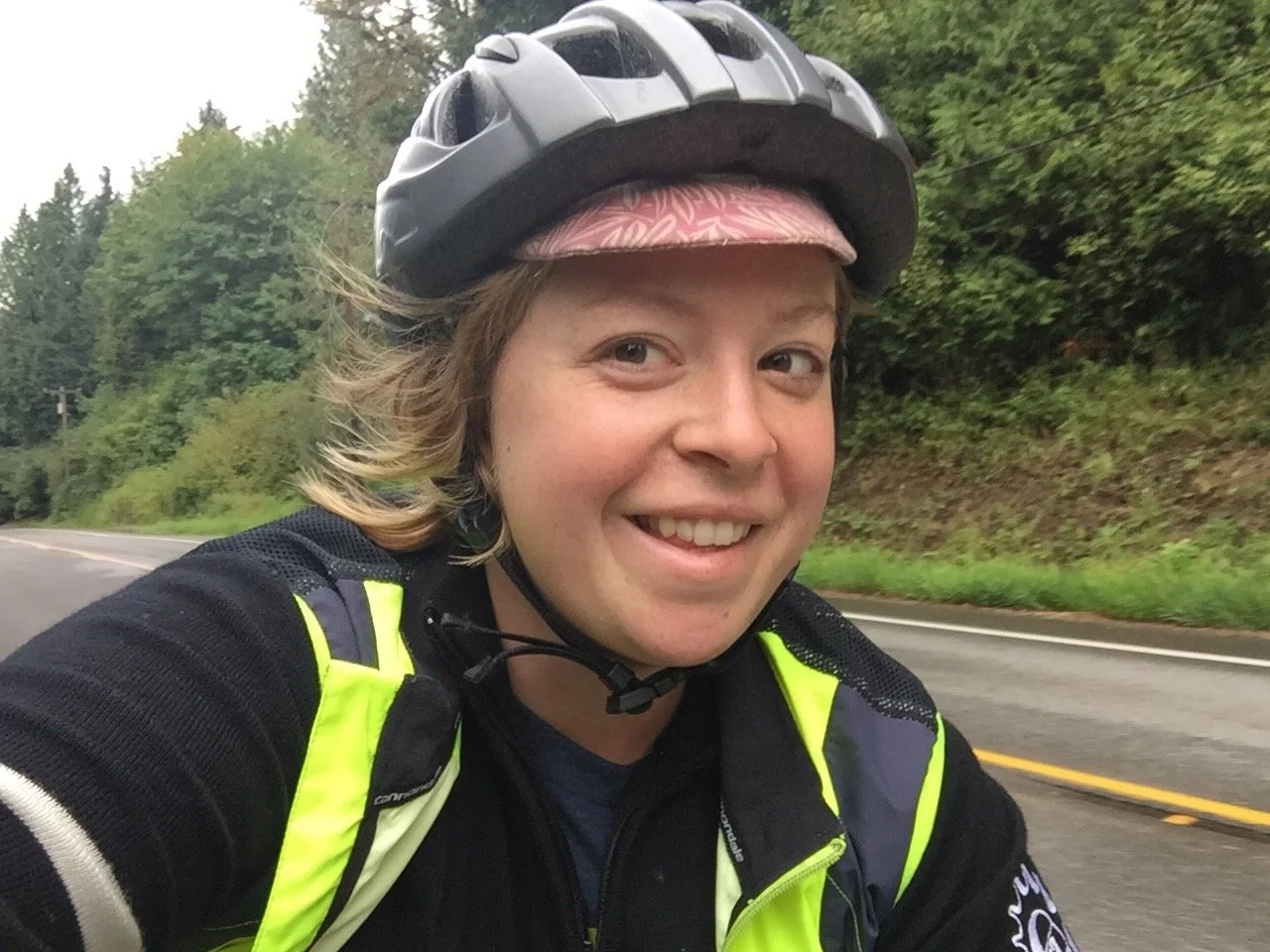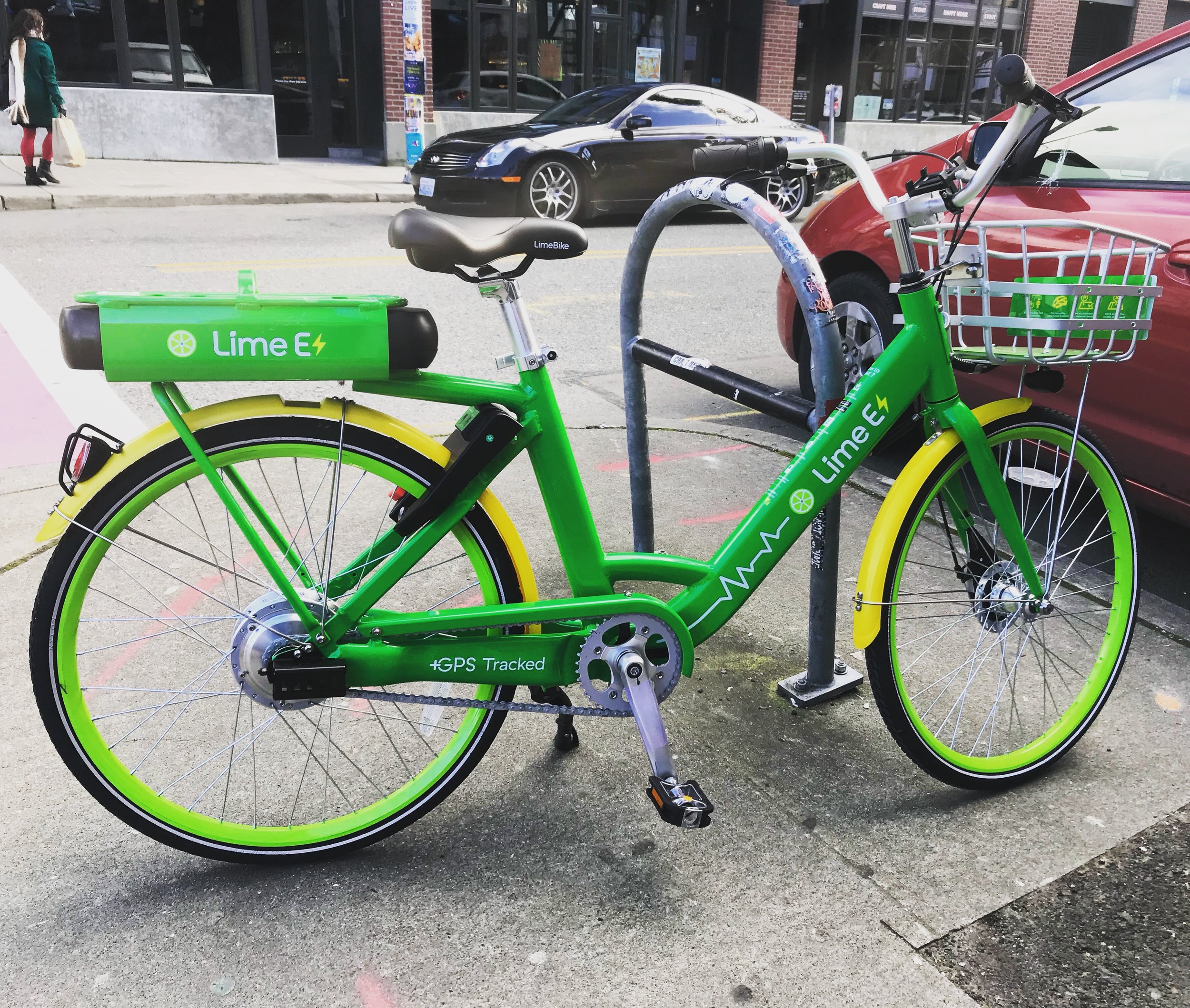The other day I was walking around Capitol Hill taking photos with my new-to-me DSLR camera and happened upon the following scene outside the Link Light Rail Station.
Now, a line of free floating bike share bikes outside of a transit station isn’t something new in Seattle. In fact, since Spin, Ofo, and LimeBike came to town, there are seemingly hundreds of colorful bikes around town. This lineup was different – there were e-bikes.
I had heard rumors about both Lime and Spin releasing electric bikes into their fleets, but here they were! Without fanfare or a Twitter marketing promotion, the bikes had been released into the wild! And for $1 I could ride one! (Technically, it’s $1 to unlock, and then $1 every 10 minutes.)
And oh.my.god. I haven’t smiled like that on a bicycle in years. Within the first pedal stroke I could feel the difference. It wasn’t huge, but it was just enough juice to boost my start and get me up to speed pretty quickly.
Since that first day, I’ve ridden the Lime e-bikes two more times, both for my commute. And overall, I am very impressed. Here is my take on the Good, the Bad, and some general thoughts.
The Good
These bikes are easy to ride. They use the same step-through, upright geometry that the other bike share bikes use. They’ve also got a front basket and cell phone holder installed, which make carrying things a breeze. Because of the battery in the back, they are quite a bit heavier than the non-electric bikes, but the weight didn’t seem to impact the handling at all.
(True confession- I normally ride a stupidly heavy Surly Straggler that has fenders and two racks, so I might not be the best judge of bike weight.)
There are no gears to shift. I have no idea what sort of technical magic they have in those bikes, but it’s a one gear system. Super simple.
You still have to pedal. The bikes are pedal assist e-bikes, which means you can’t just throttle out the power. This makes me feel like I’m still getting in some physical activity, it just makes those hills that I normally dread much more approachable.
The Bad
They’re a bit pricey. At $1 to unlock, and then $1 for each subsequent ten minutes, the costs add up fast. This is especially true if you plan to use the bikes for commuting and taking into account traffic. Similar to the Car2Go model where you pay by the minute, I felt like I needed to ride to my destination as fast as I could to avoid more charges.
They’re a bit sluggish on flats. This isn’t a huge problem, as let’s be honest, how many flat roads do we have around Seattle? Because the electric assist tops out at 14 miles per hour, riding these on flat ground makes them feel a bit slow and heavy.
Recharging is a manual and clunky process. The batteries in the bikes are replaceable and Lime has their fleet operations continually going out to the e-bikes to replace and recharge batteries that need it. This is cool, however, it means that as a user, the bike you found on the map and planned to use might have a low battery. Or, it might get picked up by the Operations Team while you’re on your way to go use it. (True story, I watched this happened and talked to the technician who picked up the bike I was about to ride.)
General Thoughts
I didn’t want to like e-bikes, but I think I might be a convert. I loved the upright position but still having power to get up hills. It was a convenient alternative to taking the bus (or my own bike.) And it was FUN.
I genuinely think that bike share e-bikes could dramatically impact the biking landscape in Seattle. Just as free floating bike share has made riding a bike in Seattle accessible to more people, these e-bikes will continue to expand the market.
Now, someone who is curious about an e-bike can ride one for less than the cost of a latte. If they have anything like my positive first experience, I could easily see this being a boom for the e-bike world.








